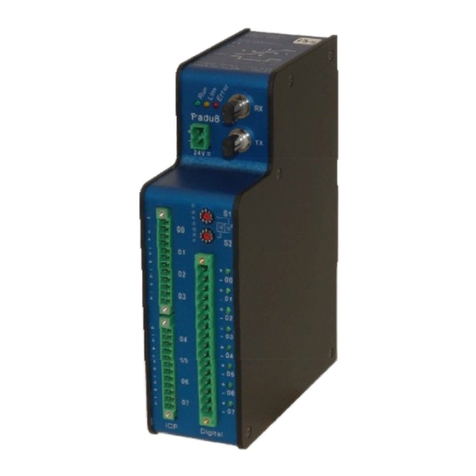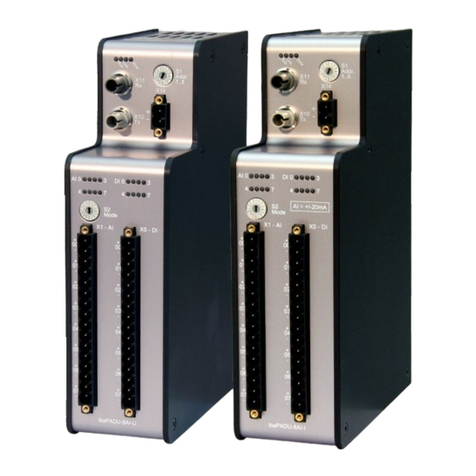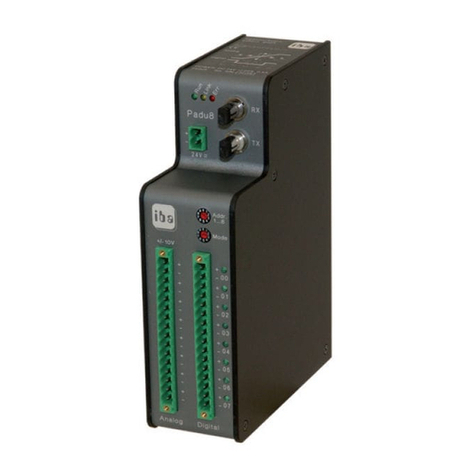
ibaPADU-8-O Manual
Issue 1.9 3
Contents
1About this manual.............................................................................................5
1.1 Target group...................................................................................................... 5
1.2 Notations........................................................................................................... 5
1.3 Used symbols ................................................................................................... 6
2Introduction.......................................................................................................7
3Package contents..............................................................................................7
4System requirements........................................................................................8
5Mounting and dismounting..............................................................................8
5.1 Mounting ........................................................................................................... 8
5.2 Dismounting ...................................................................................................... 8
6Product properties............................................................................................9
6.1 Device ............................................................................................................... 9
6.2 PC-side connection with ibaFOB-cards ............................................................ 9
6.3 PLC side connection with ibaLink-SM-64-io/ ibaLink-SM-128V-i-2o ................. 9
6.4 ibaBM-FOX-i-3o fiber optic splitting device....................................................... 9
6.5 Device views, connectors and switches.......................................................... 10
6.5.1 Power supply input X14 .................................................................................. 11
6.5.2 Fiber optic connectors TX (X10) and RX (X11)............................................... 11
6.5.3 Adjusting the device address with switch S1 .................................................. 11
6.5.4 Adjusting the device mode with switch S2 ...................................................... 11
6.5.5 Connector pin outs X14, X1, X2, X5, X6......................................................... 12
6.5.6 Status LEDs .................................................................................................... 13
6.5.7 LEDs L00…L07............................................................................................... 13
6.5.8 Service interface connector (X12)................................................................... 13
6.5.9 Shield connector ............................................................................................. 13
7Selecting the mode of operation ...................................................................14
7.1 Mode 0-standard operation mode................................................................... 14
7.2 Mode 2-impulse generator for binary output #0 .............................................. 14
8System topologies..........................................................................................16
8.1 Single daisy-chain with ibaPADU-8-O............................................................. 16
8.2 Multiple daisy-chains with ibaPADU-8-O......................................................... 16
8.3 Daisy-chain with ibaPADU-8-O to ibaLink-SM-64-io ....................................... 17
8.4 Process IO redundancy .................................................................................. 17
9Working with ibaPADU-8-O and ibaLogic V3................................................18
9.1 Hardware ........................................................................................................ 18
9.2 Software Application........................................................................................ 18

































